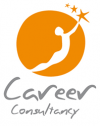‘I feel like a butterfly!’
This comment from a client floated or should I say flapped across the coffee table to me this week. And, as I walked back to the office I reflected yet again about how wonderful it is to work in an area where our support has such a radical effect on people’s happiness at work.
My new 60 second videos end with the caption, ‘Why not be happy at work?’
It IS possible but here’s the caveat: it generally needs serious analysis.
Dive Deep, Explore Widely
Most career specialists have their favourite instrument to help clients make good choices. Anyone who talks to me for more than 10 minutes is likely to get the clear picture that I find an analysis of personality preferences using the MBTI so useful. (Note, it needs to be administered with skill so that it uncovers your hard-wired preferences rather than what I call ‘learned behaviour’).
Yet, MBTI is one of only four or five assessment tools that I use. Note my use of the plural. Work is complex. People are complex.
I would never dream of thinking that one career assessment tool will provide all the answers. Latest research confirms my unease.
In theory, our personal traits and interests should affect the jobs we pursue and where we thrive the most. You’d think that people who share the same job role would also have similar job interests. Yet a surprising new study in the Journal of Vocational Behavior suggests that for many jobs, this simply isn’t true.
Picasso and your Local Mechanic have Lots in Common

The research team used the popular Strong Interest Inventory (that measures interest in six areas: Realistic, Investigative, Artistic, Social, Enterprising and Conventional).
At times, the results lined up well: the strongest example being for fine artists, auto mechanics and carpenters, where in each case, 82% of role holders shared the same focus – Artistic for the first and Realistic for the latter two.
But people in other occupations showed much less similarity in interests. For instance, in almost 50% of the occupations, only the thinnest of majorities tended to share the same interest, meaning that a lot of the time two people in the exact same job often had very different occupational interests.
The research team found that just over half the jobs showed more alignment than you would expect to see at random, but the remaining 45 per cent were the same or less. What this means is that a sizeable minority of occupations are filled by people who aren’t especially interested in the type of work their role is understood to require.
Does this mean that you should not bother with any career analysis? Not at all! It just means that you have to be more thorough.
Take these 5 Steps to Uncover your Dreams or Audit your Current Job
There are 5 core elements that make up career satisfaction and you will only be truly happy at work if you are able to tick the box for all five.
Answer the following questions to uncover your critical career drivers.
1. What activities are you good at and enjoy?

I am a born teacher/trainer. I just love helping others to improve their technical ability at a critical task. If you were swimming in a lane next to me, I would struggle to resist the urge to lean across the lane ropes and give you some of my best swimming tips. Now, you know that you’re hard-wired to enjoy an activity when you still do it even if there’s nothing in it for you (and when you actually may get a mouthful of abuse from the recipient of your ‘wisdom’.)
First, assess your ability against your peers. However, it’s not enough to be skilled, you must also REALLY enjoy the activity. The top 6-10 activities should form your core work activities.
For the full analysis, I use Richard Knowdell’s famous Skills/Interests assessment but there are plenty of free online tools you could use instead if you want to explore more systematically.
2. What sort of colleagues are on the same wavelength as you?

In a former job, I was told with some tartness by a colleague that ‘we eat our lunch in our lunch hour here.’ Wondering if I had escaped from a 1940’s office sit com, I concluded that she was Conventional in her outlook whereas I was Enterprising. It was quite a mismatch and we never clicked.
Most of us try to get on with our work colleagues, but some types of people just take more effort than others. Richard Bolles translates the Strong Interest Inventory into a Party Game activity where he asks: which group of people you would naturally gravitate to for a chat: Realistic, Investigative, Artistic, Social, Enterprising and Conventional?
Choose your top three, ranked. These are the types of people who will make your heart sing at work.
The full description of this activity can be found in his famous book, ‘What Color is your Parachute?’
3. When are you most ‘in the zone’ at work?
I am hard-wired to be entrepreneurial, not so much by wanting to establish a huge empire, but in the sense of scanning the horizon for opportunities and taking advantage of them, in a fluid manner. I will also break a rule that I believe is silly if I think that I can get away with it. I am totally unsuited to hierarchical organisations.
What about you? Are you an ENTJ – ‘Everything’s fine, I’m in charge?’ Or perhaps an ENFJ – ‘The Public Relations Specialist?’
Once you know, there are wonderful books such as ‘Do What You Are’ by Paul D. Tieger that contain invaluable information to help you find work that is likely to suit your preferences.
This is one area where there is no point going online for a ‘quick and dirty’ analysis, because it will be exactly that. This information is uncovered using MBTI with an accredited assessor.
4. What work environment fits your career values?

As might be imagined for someone with my personality preferences, my number one career value is Independence. I have a huge need to set my own pathway in life. I often comment somewhat ruefully that I am unemployable. Not only would I not want to have my freedom curtailed, I would probably polarise my fellow workmates. Oh dear!
The secret is to rank your Top 7 values and then ask yourself if your current work place and type of work allows you to satisfy these values.
As before, for the full analysis, I use Richard Knowdell’s famous Career Values assessment but there are plenty of free online tools available.
5. What is your preferred career path?
After jumping from teaching to hospitality to banking to general management, I view myself as a ‘Spiral’. I am happy when I make major moves across occupational areas, specialities or disciplines. Ideally, these moves come every seven to ten years, so that I can develop in-depth competence before moving on to a new field.
The typical move is one where I move into an allied area, which draws upon knowledge and skills developed in the old, and at the same time throws open the door to the development of an entirely new set of knowledge and skills. My main motives are personal development and creativity.
This analysis only has 4 variations: Linear, Expert, Spiral or Transitory.
This information is uncovered using the Career View assessment tool.
Take all Ingredients and Stir Thoroughly
It is important that you check for congruency across the results of all the assessments. For example, if you self select for high levels of creativity in personality preferences, you are not likely to self-select high levels of attention to detail in your skills/interests inventory. Any mismatch should be investigated.
Start with your Ideal World, completing the above range of activities. Then, stir in a good measure of cold hard reality. These are issues such as ageing parents, expensive children or your degree of self confidence.
In the best of worlds, there is no difference between the two worlds.
What if your current/proposed job bears no or little relationship to this Nirvana?
At least you will know. I can remember a client who resigned the next day after she had completed this analysis.
Armed with the knowledge of the disconnect, you can plot your escape. The world these days is so fluid that it should be possible to do it.
There is no short cut when it comes to career satisfaction. Start your analysis now and then start your strategic plan.
Like what you’ve read? Subscribe to our newsletter by clicking here. You’ll be the first to hear about our updates once a fortnight!


